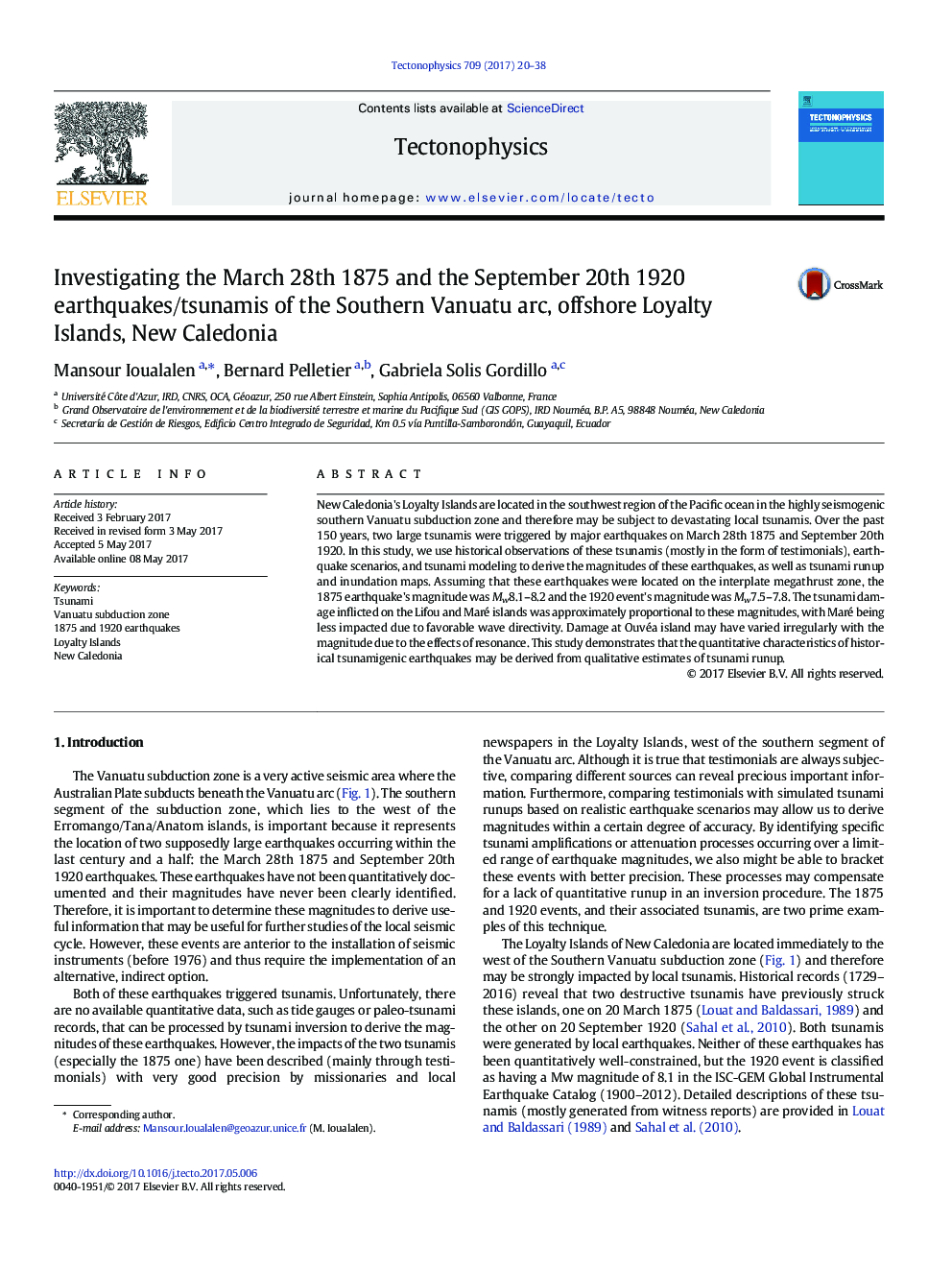| Article ID | Journal | Published Year | Pages | File Type |
|---|---|---|---|---|
| 5781666 | Tectonophysics | 2017 | 19 Pages |
Abstract
New Caledonia's Loyalty Islands are located in the southwest region of the Pacific ocean in the highly seismogenic southern Vanuatu subduction zone and therefore may be subject to devastating local tsunamis. Over the past 150Â years, two large tsunamis were triggered by major earthquakes on March 28th 1875 and September 20th 1920. In this study, we use historical observations of these tsunamis (mostly in the form of testimonials), earthquake scenarios, and tsunami modeling to derive the magnitudes of these earthquakes, as well as tsunami runup and inundation maps. Assuming that these earthquakes were located on the interplate megathrust zone, the 1875 earthquake's magnitude was Mw8.1-8.2 and the 1920 event's magnitude was Mw7.5-7.8. The tsunami damage inflicted on the Lifou and Maré islands was approximately proportional to these magnitudes, with Maré being less impacted due to favorable wave directivity. Damage at Ouvéa island may have varied irregularly with the magnitude due to the effects of resonance. This study demonstrates that the quantitative characteristics of historical tsunamigenic earthquakes may be derived from qualitative estimates of tsunami runup.
Keywords
Related Topics
Physical Sciences and Engineering
Earth and Planetary Sciences
Earth-Surface Processes
Authors
Mansour Ioualalen, Bernard Pelletier, Gabriela Solis Gordillo,
